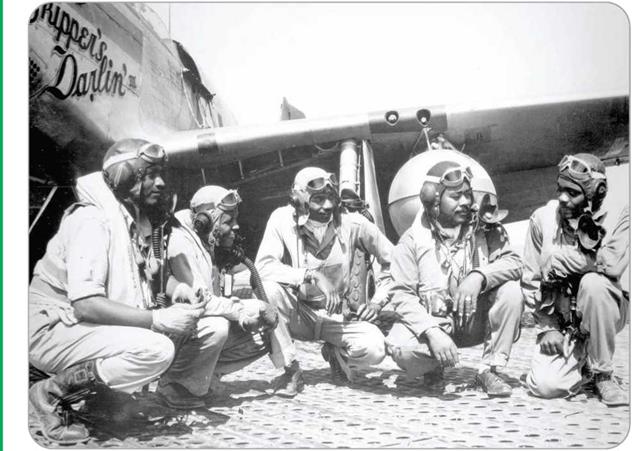GPS satellites last up to ten years, and new satellites are launched from time to time to replace older satellites. Each new generation of satellites is more advanced than the previous generation.
The first generation of GPS satellites was called Block I. These were experimental satellites used to test the system. Block II satellites formed the first operational network. Block IIA satellites are a more advanced version of these. The next generation—Block IIR satellites— can be reprogrammed in space to fix
problems and upgrade their services.
The updating continues. Block IIR satellites are already being replaced with a new generation of satellites called Block IIR-M. Block IIF satellites are due for launch in 2009, and yet another new generation, Block III, is due for launch in 2012. Block III satellites will transmit more signals more powerfully on more frequencies. This will make it much easier to pick up GPS signals with less powerful receivers, and GPS equipment will shrink in size in the coming years. In the future, many portable products— from watches and personal music players to cell phones and laptop comput – ers—may have built-in GPS receivers.
N
Gossamer Penguin
Type: Experimental aircraft.
Manufacturer: AeroVironment, Inc.
First flight: April 7, 1980.
First solar-powered flight: May 18, 1980. Primary use: Research.
ossamer Penguin was the world’s first solar-powered airplane to carry a human pilot. It made its first flight in 1980. Gossamer Penguin is one of several experimental aircraft designed to investigate the possibility of using energy from the Sun, rather than fossil fuels, to power airplanes of the future. The advantage of a solar airplane is that it could fly for many days without ever having to land, because its power source (sunlight) is all around it in the atmosphere.
The inventor of Gossamer Penguin was Dr. Paul MacCready, a pioneer of alternative airplane technologies. In 1977, he built Gossamer Condor, a pedal-powered plane that won the Kremer Prize. This award had been offered since 1959 to any inventor who could build a human-powered airplane capable of flying a figure-8 course around two markers placed 0.5 miles (0.8 kilometers) apart, while staying at least 10 feet (3 meters) off the ground.
MacCready followed up his 1977 achievement in 1979 with Gossamer Albatross. This was the first human – powered airplane to fly across the English Channel between England and France. The pilot’s pedaling provided the energy to turn a propeller and proved that lightweight pedal-planes could fly considerable distances using very little energy. Duration of flight, however, depended on a human pilot who soon got tired.
The Sun, on the other hand, offers limitless energy, so inventors are very interested in solar-powered airplanes. The first solar-powered airplane was Sunrise II, a remote-controlled vehicle built by Robert Boucher in 1974.
Using the experience they had gained with Gossamer Albatross, MacCready and his team, advised by Boucher, built a version three-fourths the size, which was powered by an Asro-40 electric motor. The electric plane, Gossamer Penguin, took to the air in 1980. Like Gossamer Albatross, it was made of lightweight plastic, carbon fiber, polystyrene, and sheet film. Power for the motor came either from twenty-eight batteries or from 3,920 solar cells, which could convert sunlight into electricity. The cells were mounted on the plane’s 71-foot-wide (22-meter-wide) wings.
The first flight, using battery power, took place on April 7, 1980, at Shafter Airport near Bakersfield, California. It was made by MacCready’s son (also named Paul), then age thirteen and weighing only 80 pounds (36 kilograms). The boy then made one short solar-powered flight on May 18.
More solar-powered flights were soon made in the Gossamer Penguin by pilot Janice Brown, who weighed in at around 100 pounds (45 kilograms).
 О The solar – powered Gossamer Penguin is flown here by schoolteacher Janice Brown, a qualified pilot. The solar panel (top) is tilted toward the Sun.
О The solar – powered Gossamer Penguin is flown here by schoolteacher Janice Brown, a qualified pilot. The solar panel (top) is tilted toward the Sun.
On August 7, 1980, she flew the Penguin for about 2 miles (3 kilometers) in a flight lasting 14 minutes.
After the Gossamer Penguin, the MacCready team built Solar Challenger. This plane had smaller wings but an extra-large rear stabilizer. The stabilizer offered enough surface area for 16,128 solar cells, which meant the Solar Challenger was a lot more powerful than the Penguin. In 1981, the Solar Challenger became the first solar-powered airplane to cross the English Channel, completing a trip of 161 miles (259 kilometers) from north of Paris, France, to Kent, England.
The success of Gossamer Penguin and Solar Challenger was followed up by
later solar airplanes, such as Pathfinder. This unmanned research airplane, developed by NASA, first flew in 1993. Pathfinder and its successor, Pathfinder Plus, set several altitude records, reaching a height of over 80,000 feet (24,400 meters) in 1998.
Solar-powered flying wing airplanes, remotely controlled from the ground, may someday be able to fly for weeks or months and help carry out scientific research, mapping, and other tasks.
SEE ALSO:
• Aircraft, Experimental • Energy
• Fuel • Future of Aviation
_____________________________________________ /
![]()
![]()















 О The solar – powered Gossamer Penguin is flown here by schoolteacher Janice Brown, a qualified pilot. The solar panel (top) is tilted toward the Sun.
О The solar – powered Gossamer Penguin is flown here by schoolteacher Janice Brown, a qualified pilot. The solar panel (top) is tilted toward the Sun.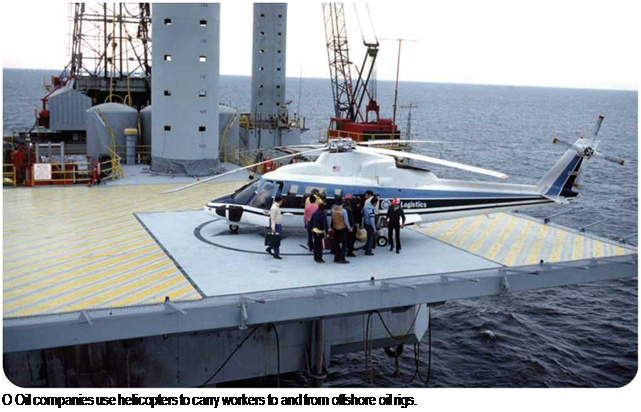
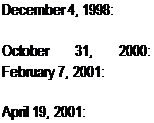
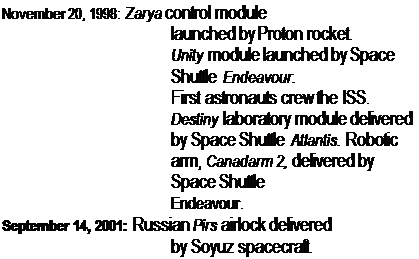 first time a U. S. spacecraft had linked up with the Russian space station. The modular design of Mir, with its solar panel “wings” and the docking unit used to link with the Shuttle, were forerunners of systems later developed for the International Space Station.
first time a U. S. spacecraft had linked up with the Russian space station. The modular design of Mir, with its solar panel “wings” and the docking unit used to link with the Shuttle, were forerunners of systems later developed for the International Space Station.
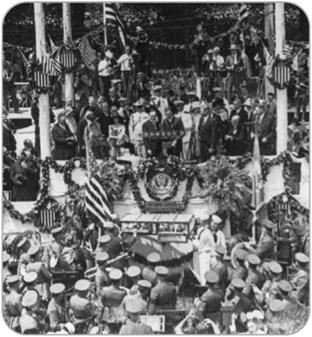


 О The International Space Station, a cooperative project involving several nations, began with the launches of Russian module Zarya and U. S. module Unity. This photograph shows Unity in the foreground, being delivered by NASA’s Space Shuttle Endeavour for rendezvous with Zarya.
О The International Space Station, a cooperative project involving several nations, began with the launches of Russian module Zarya and U. S. module Unity. This photograph shows Unity in the foreground, being delivered by NASA’s Space Shuttle Endeavour for rendezvous with Zarya.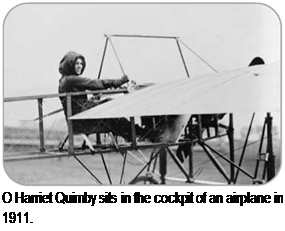 EARLY WOMEN PILOTS
EARLY WOMEN PILOTS

